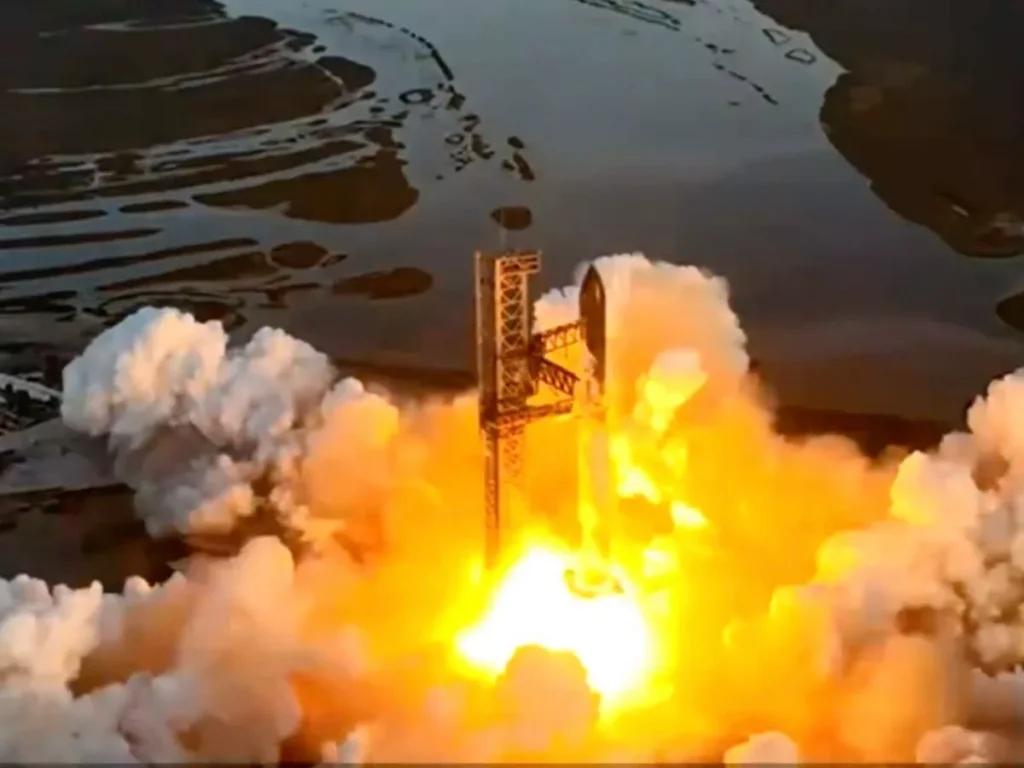Elon Musk’s SpaceX Starship lost contact with the craft ten minutes after it lifted off successfully, producing an audible boom that echoed around the launch site as the countdown clock reached zero despite the Super Heavy booster’s explosion.
Shortly after, SpaceX lost communication with the spacecraft, the company, launched the self-destruct feature on Starship.
One day, Elon Musk hopes to colonise Mars with SpaceX’s Starship, the largest rocket ever built. NASA is holding off on sending humans to the moon until they have adapted Starship. On Saturday, SpaceX is scheduled to launch Starship on its second test flight.
It comes after an unsuccessful attempt in April to launch the spacecraft in its fully-stacked configuration, which produced a spectacular explosion over the Gulf of Mexico.
While there is not much time left for a modified Starship to be prepared for a planned lunar visit in 2025, SpaceX has stated that early rocket development explosions are desirable and can provide design decisions more quickly than ground testing.
The company’s Starbase in Boca Chica, Texas, is scheduled to launch at 7:00am local time (1300 GMT) with a 20-minute launch window.
When the two stages of Starship are merged to achieve a height of 397 feet (121 metres), the rocket comfortably outreaches the Statue of Liberty by ninety feet.
Its Super Heavy booster generates 16.7 million pounds (74.3 Meganewtons) of thrust, nearly twice as much as NASA’s Space Launch System (SLS), the second-most powerful rocket in the world at the moment, even though SLS is already fully operational.
One of SpaceX’s primary design features intended to significantly save costs is the systems’ complete reusability.
In the event that the mission is successful, the upper stage will nearly reach orbital velocity and land in the Pacific Ocean near Hawaii after ninety minutes, while the booster will land in the Gulf of Mexico shortly after launch.
On April 20, four minutes after launch, the two stages of Starship failed to separate, forcing SpaceX to blow it up. This was the first unsuccessful test flight.
The rocket exploded into a ball of fire and plummeted into the Gulf of Mexico, creating a dust cloud that covered a hamlet several miles (kilometres) away.
Following a months-long study, the Federal Aviation Administration finally approved SpaceX to make another try on Wednesday. Environmental organisations, however, were not amused by this and are suing the agency on the grounds that it disregarded environmental laws.
The biggest modification since the first launch is the manner the spacecraft separates from the rocket.
The Starship has been reconfigured to use “hot staging,” a method commonly used by Russian rockets that may release a great deal more power. This implies that as long as they are connected to the rocket, the higher-stage engines will run.
Among the other changes are vent enhancements to reduce the possibility of an explosion.
In the initial launch, the company’s Starbase launchpad also sustained significant damage. The launchpad has been equipped with a water-jetting system and high-strength concrete to mitigate the extreme heat and force generated during the launch.

